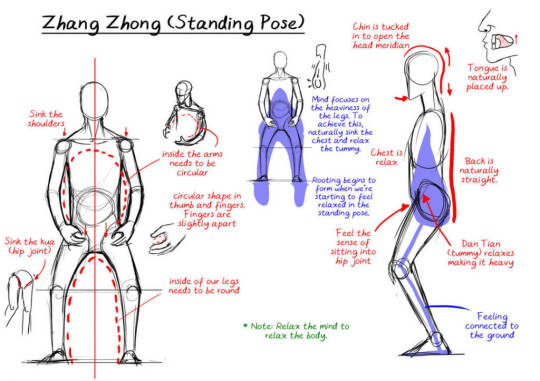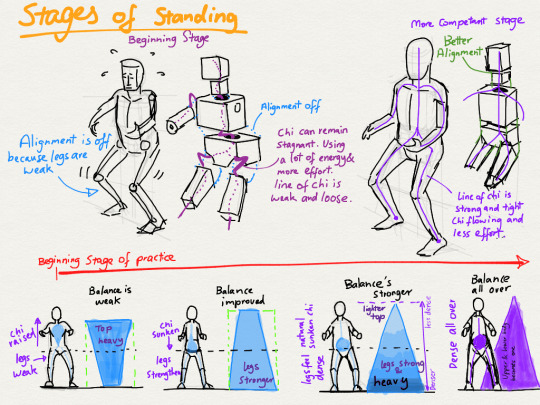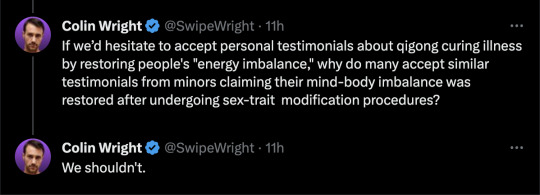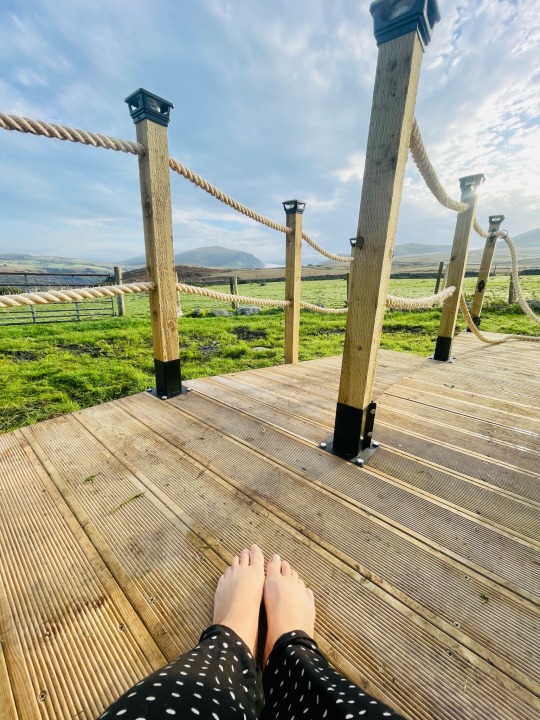#qigong
Text
If anyone's looking for really gentle or disability friendly exercise...
Doctor Jo on YouTube is a physical therapist who offers lots of therapeutic stretching and exercise videos for specific conditions and pain relief. [x]
Leap Services is a Canadian physical therapy group that has a YouTube playlist of gentle exercise routines. All of these exercises are done in a chair (except for one which is done on the floor) and are intentionally adaptable to different bodies and needs. [x]
Yoga with Zelinda on YouTube has yoga that's adapted to a large number of conditions, for instance, providing a playlist of routines that don't require kneeling and another of chair yoga. She also offers yoga for specific health challenges, like fibromyalgia and mobility issues. There's a playlist of yoga routines for people with bigger bodies as well. [x]
Santosha Spirit on YouTube has yoga routines for people with chronic fatigue, chronic pain, POTS, and EDS. [x]
Yoga with Shaunneka on YouTube has a playlist of slow seated yoga, including chair yoga, as well as a playlist of gentle yoga. [x]
Qinergy on YouTube has tai chi sets broken down into easy tutorials. There is a seated version of her shibashi set. [x]
Perth Tai Chi Academy on YouTube is similar to Qinergy. It provides a seated version of daoyin yangshen qigong. [x]
14K notes
·
View notes
Text
Sigh
For the last fucking time, THE JEDI ARE NOT CATHOLIC!
They're not based off of the catholic church, that's just people's fanon interpretation (and it's mostly just people projecting their issues with catholicism onto the Jedi), if you actually take a minute to look up what George Lucas' sources and inspirations for the Jedi, you'll find that he based them off of everything EXCEPT christianity, the inspirations for the Jedi being Japanese and East Asian cultures, Arabic ideas (Jedi may be derived from "Al-Jeddi" which means "Master of the Mystic-Warrior way"), Buddhism, Jewish Mysticism, Samurai Bushido, Shaolin Monks, Hinduism, Qigong, Greco-Roman philosophy and mythology, Sufism, Confucianism, Shinto, and Taoism, the only christianity you might be able to say influenced the Jedi is Methodism, since Lucas was a Buddhist-Methodist
Like yes, you can certainly find Jedi beliefs and practices to be similar or parallel to catholicism and Christianity, I have, but that's on you, that's YOUR interpretation
#i say this as a catholic#wooloo-writes#wooloo writes#star wars#sw#pro jedi#in defense of the jedi#catholicism#jedi#christainity is like the only thing that DIDN’T inspire lucas when he was creating the Jedi#samurai#bushido#shinto#taoism#qigong#shaolin#sufism#greek philosophy#greek mythology#confucianism#jewish mysticism#arabic#jedi and judaism#look i get it#you were traumatized by the catholic church#that sucks#BUT STOP TREATING EVERY RELIGION LIKE THEY'RE CHRISTIANITY
291 notes
·
View notes
Text

交互呼吸法 Alternate breathing technique
Nourishing Seated Meditation Techniques
養生靜坐法 / 行願悲舍舍主編著 ; 臺北市 : 青春, 民75[ 1986]
26 notes
·
View notes
Text
Zhan Zhuang: Standing Meditation

The body of the average modern human being has become a dysregulated, disconnected mess of weakness, tightness, tension, chronic pain, and numbness.
In a word, imbalanced.
Some of that may be an inescapable aspect of our mortal form, such as a chronic disease or permanent injury, which then must be accepted and accommodated. But in many other instances, this poor state of the body is a result of our own misuse and neglect.
How often do you simply stand? Not leaning one way or the other, not shifting your weight from foot to foot, not contorting your posture around a mobile phone or heavy bag.
A multitude of people work office jobs or are students of rigorous academics and they will spend many hours sitting. During the first year of the pandemic, when most people were staying at home, I found myself sitting or lounging all the time.
It was during the pandemic that I first began to practice Zhan Zhuang, Standing Like a Tree.
As I have begun standing for very long surgeries, I have made an effort to return to this practice daily. It has made an immense difference.
Zhan Zhuang
The premise of this standing practice is simple.
You stand. You breathe. And that's it.
There are some finer points to the posture, which should be integrated as one acclimates to the practice.

One can imagine how this develops a sense of being both grounded and centered. And it needn't be a long session. I have been doing 5-10 minutes with amazing results.
Beneath this deceptively simple practice, a profound shift unfolds over time. The body re-organizes itself in relation to the axis of gravity and in doing so it also pulls the body into a naturally harmonious alignment.

There are a number of resources for leaning zhan zhuang. I found a YouTuber with an excellent several week course for free:
Nick Loffree: Bioenergetic Health
Additionally, there is a site with a free PDF I quite liked:
Scott Jeffrey: Zhan Zhuang
Standing Meditation
So you may ask yourself: does this count as meditation?
My answer would be: it depends. It can be!
I would categorize this practice as somatic meditation. This means that if you are engaging your conscious attention with the physical sensation of the body as a whole and breathing silently with it, then it is a meditation practice.
If you are doing this while watching TV or something, it is still good for the body but I would not call it meditation.
Qi
Lastly, standing practice is also a beneficial method for discovering, gathering, and aligning qi.
Qi is something I have been exploring these days as part of my foray into somatic spirituality. I have yet to alight on a plain English translation that I really like. Qi has been called many different things previously: vital force, spirit, or simply energy. It seems to be very similar to the yogic concept of prana. Both are vital forces that relate to organic systems.
I am thinking "vital energy" may be a sufficient term, as it is distinct from even more subtle forms of energy spoken of within various occult/spiritual paradigms.
Regardless, I will be writing more about qi and somatic spirituality in the future. That said, standing meditation is a good fundamental practice with a number of benefits. Give it a try!
LY
#qigong#qi#standing meditation#zhan zhuang#spirituality#yoga#somatic meditation#mindfulness#health#body
117 notes
·
View notes
Text
Taoist Bigu Practice: Is It About Health Preservation?
A few thoughts on a millennia old austerity practice, bigu (辟穀) fasting, “abstention from cereals”.
Nowadays, this concept is hyped and heavily misinterpreted: some argue that it implies extreme starvation, some claim that this is a special diet associated with the restriction of starchy foods and aimed at losing weight.
It’s an old-school practice, also called Duangu (Stop Cereals, 斷谷), Juegu…

View On WordPress
#ancient China#bigu#Chinese culture#golden elixir#healing practices#neidan#qigong#Tang dynasty#Taoism#Taoist alchemy#Taoist healing#Taoist practices#traditional Chinese medicine
15 notes
·
View notes
Text
Genuinely listening to other people is a practice and every conversation presents you with an opportunity to practice. Remember, people want to feel heard
#listening#attention#kindness#compassion#good listener#spirituality#buddhism#zen#meditation#mindfulness#yoga#qigong
7 notes
·
View notes
Text
youtube
this had my bones crackalackin like you would not believe lol
#all through my hips shoulders lol#qigong#feels good though really Hit The Spot#probably could have done a 20 minute one just fine but this was definitely good#Youtube
18 notes
·
View notes
Text
Book of the Day - The Roots of Chinese Qigong
Today’s Book of the Day is The Roots of Chinese Qigong: Secrets of Health, Longevity, & Enlightenment, written by Yang Jwing-Ming in 1997 and published by YMAA.
Dr. Yang Jwing-Ming is a world-famous author and teacher of Chinese martial arts. Born in Taiwan, he has studied, taught, and shared his deep understanding of Kung Fu, Taijiquan, Qigong, and both Internal and External Chinese martial…

View On WordPress
#Book Of The Day#book recommendation#book review#bookstagram#booktok#Internal Martial Arts#Martial Arts#MMQG#MMQG Qi Gong#Qi Gong#Qi Gong Master#qigong#Raffaello Palandri#TCM#Traditional Chinese Medicine#Yang Jwing Ming#YMAA
36 notes
·
View notes
Text




By: Colin Wright
Published: Aug 28, 2023
One might think the fact that the medical establishment is endorsing and performing experimental, irreversible, and often sterilizing medical procedures on children would be an immense journalistic discovery. But a recent New York Times article—investigating allegations made by Jamie Reed, a former case manager at the Washington University Transgender Center at St. Louis Children’s Hospital who blew the whistle on medical malpractice at the clinic traveling under the guise of “gender-affirming care”—downplays the results of that discovery in a way that privileges personal testimony over evidence.
Reed’s allegations were numerous. She claimed that the clinic was inundated with requests for transition services without adequate protocols to handle them, that patients were hastily approved for transitioning despite notable mental-health comorbidities, that individuals were not fully briefed on the risks and side effects of their prescribed medications, and that any opposition within the clinic was quelled. As Leor Sapir observes, the Times investigation corroborated most of Reed’s claims. A discerning reader who cuts through the article’s euphemisms and sidesteps the author’s political asides would discern as much.
Indeed, the newspaper of record has verified concerns that critics of “gender-affirming care” have raised for years. The current influx of trans-identified youth, primarily girls with no previous gender-related distress, symbolizes a fresh patient group exhibiting a new and as-yet-unstudied form of gender dysphoria. Gender-affirming care is experimental, with no long-term, rigorous studies demonstrating its advantages over the many obvious risks.
Yet throughout, the Times article alludes to the realities of pediatric gender medicine, while simultaneously obscuring them. Consider some representative quotes.
[A]ccording to an internal presentation from 2021, 73 percent of new patients were identified as girls at birth. Gender clinics in Western Europe, Canada and the United States have reported a similarly disproportionate sex skew that has bewildered clinicians.
Here, the Times concedes that the children currently fueling the unprecedented surge in gender-clinic referrals differ significantly from the group (natal males) that the original, ostensibly more cautious, “Dutch protocol” for pediatric sex-trait modification was intended to serve. As a Reuters investigation recently revealed, U.S. gender clinics aren’t adhering even to the Dutch approach. Instead, they’re adopting a less rigorous, highly medicalized “gender-affirming” model, which entails automatic social transition and on-demand puberty blockers, cross-sex hormones, and surgeries. Considering that this form of gender dysphoria is new and rapid, it would seem prudent to gather more data about its possible causes before offering medical interventions.
Pediatric gender medicine is a nascent specialty, and few studies have tracked how patients fare in the long term, making it difficult for doctors to judge who is likely to benefit.
This dramatic understatement amounts to an admission that the current practice of “affirming” a child’s cross-sex identity with hormones and surgeries is completely experimental. It follows that advocates’ claims that such interventions are beneficial or “life-saving” are not based on any high-quality research. Those who have meticulously monitored the data have been aware of this from the beginning, and systematic reviews conducted in Sweden, Finland, and the U.K. support this view. Yet, despite such evidence, U.S. medical organizations, including the American Academy of Pediatrics, have obstinately maintained a pro-affirmation stance.
It’s clear the St. Louis clinic benefited many adolescents: Eighteen patients and parents said that their experiences there were overwhelmingly positive, and they refuted Ms. Reed’s depiction of it.
This particularly jarring statement showcases the post hoc, ergo propter hoc (“after this, therefore because of this”) fallacy: it presumes a causal relationship between phenomena merely because one follows the other. Being cautious of this fallacy, especially in the realm of human health, is fundamental to evidence-based medicine.
Few deny that many individuals are genuinely satisfied with the results of their hormonal or surgical transition. I’ve heard heartfelt accounts from minors stating that their mental well-being improved after gender-affirming treatment, and I don’t question their sincerity. However, modern medicine doesn’t—or shouldn’t—gauge the success of a treatment based purely on a patient’s personal testimony. Without comprehensive long-term-outcomes data and controlled experiments—which Ghorayshi acknowledges do not exist—it remains impossible to know whether the “positive” outcomes mentioned by the patients she references flow from the gender-affirming procedures or if the same contentment could have been achieved without resorting to body-altering hormones and surgery.
The Times article inadvertently suggests the importance of evidence-based medicine. Evaluating the effectiveness of a drug or surgery solely based on patient satisfaction constitutes a significant departure from its fundamental objectives. Were observers to start taking personal testimonies as sufficient evidence for the success of a medical treatment, the FDA would become obsolete. We’d all be forced to embrace the extravagant and pseudoscientific assertions of any self-styled health guru or medical quack.
Compare the use of testimony to support gender-affirming care at the St. Louis hospital with the Minnesota-based “healing center” known as Spring Forest Qigong (SFQ). SFQ champions the use of an ancient Chinese ritual called “external qigong” to heal the afflicted. According to its website, illnesses, or “dis-eases,” as they are fancifully labeled, are the result of “energy blockages within the body.” SFQ asserts that qigong is the magical wand that dispels these obstructions, thereby restoring the body’s “natural balance.” This involves the enigmatic Qigong Master Chunyi Lin waving his hands over one’s body, channeling energies and dissolving said blockages. If the idea of driving all the way to Minnesota for treatment seems tedious, fear not: Master Lin generously offers to transmit these energies and conduct qigong sessions over the phone.
The SFQ site provides links to several “scientific” articles from the Journal of Holistic Nursing and The American Journal of Chinese Medicine. These papers, apparently, endorse external qigong as an antidote for chronic pain. But for novices to the mystical realm of SFQ and qigong, the site offers glowing testimonials from satisfied SFQ customers.
One says: “I’ve tried different medicines. They gave relief but didn’t cure me. This season I’ve lived allergy free and I credit it to the [Spring Forest Qigong] Active Exercises I've been doing [for the past six months]. I didn’t take even one pill. Since there weren’t any other changes in my lifestyle, diet, or anything, I credit the [SFQ] active exercise. Channels were cleared, immune system adjusted and here I am, happy and allergy free.”
Another: “I was breathing into the shoulder and seeing the pain turn to air or smoke each night before I went to sleep, and it got better and better and better. I went back to the doctor months later and showed him the improvement. He said, ‘There is no way you should be able to do what you’re doing. You should be in excruciating pain. I can’t explain how you can do it, but whatever you’re doing, don’t stop.’”
Still another: “Chunyi Lin and Spring Forest have had an amazing impact on my life. It’s given me a way to live life more fully, happier. To me it’s a God send. The practice of Qigong is something everyone can benefit from. Once you have had an experience with Qigong you want to keep it a part of your life.”
One woman even says that qigong eradicated her Stage 4 breast cancer: “I rejected conventional cancer treatments from your classically trained oncologists because they didn’t work the first time. This time it was my life that hung in the balance and I was resolved to find alternative measures to find healing. And, fast forward, after six, seven months of both medical treatments and visiting with Master Lin in the Spring Forest Qigong Center I am completely healed. My cancer’s gone. My doctors call me a ‘walking miracle.’”
Should doctors and scientists view these “overwhelmingly positive” experiences as clear proof that Qigong Master Chunyi Lin healed these patients by simply waving his hands over their bodies (or through the phone) to dispel their energy blockages? Should we confidently endorse external qigong for people with Stage 4 breast or liver cancer? Probably not. Instead, we’d likely advocate for rigorous testing of external qigong through randomized control trials, demanding tangible evidence of its benefit before suggesting it could treat even minor ailments.
But if we’d be hesitant to accept these testimonials about how qigong cured some people’s energy imbalance, then why are many political progressives so quick to accept similar testimonials from minors who claim their mind-body imbalance was corrected after undergoing sex-trait modification procedures? Why is such testimony taken as definitive proof of these procedures’ benefits? Ideology couldn’t possibly be the reason—right?
==

By the way, this is intentional. It's part of the postmodern goal of deconstructing objective reality.
#Colin Wright#sex trait modification#genderwang#gender ideology#queer theory#medical scandal#anecdotal evidence#argument from anecdote#anecdote#Qigong#external qigong#alternative medicine#religion is a mental illness
16 notes
·
View notes
Text
.
practicing the form
engaging my reflexes
single handedly
.
#oddman-the-oldman#qigong#onanism#meditation#tantric tricks#poetryslutsreloaded#sololove#double entendre
29 notes
·
View notes
Text
Watch "Shaolin Qigong 15 Minute Daily Routine" on YouTube
youtube
You're welcome 😊
22 notes
·
View notes
Text
youtube
my 3rd 20 minute martial arts session of the day!
i'm just going to try them all eventually prob i'm just so curious
3 notes
·
View notes
Text




Multipurpose deck becomes open air studio for yoga and qigong practice this morning - much to the amusement of the cows!
9 notes
·
View notes
Text




today’s movement & meditation ✨
#movement diary#qigong#meditation#goddess energy#divine feminine#cardio#hiit#that girl#it girl#pink pilates princess#healthy girl#fitblr
6 notes
·
View notes
Text



There are several life-changing tips here. Feel it out.
Source
140 notes
·
View notes
Photo

"If you abandon intention, the birds will not be suspicious. If your intention is stirred, the birds will fly away. Why? This is because you can fool the form but not the spirit. Even if your spirit moves slightly, the other's spirit will know. This is the way things are: nothing can be hidden from the spirit. The sage knows that she and the ten thousand things are connected. Therefore, she always abandons her intention and keeps her mind empty."
[Eva Wong, who wrote "Nourishing the Essence of Life" .
She is a lineage holder of Daoist Qigong (Xiantianwujimen) and teaches through the Shambhala Center.]
36 notes
·
View notes